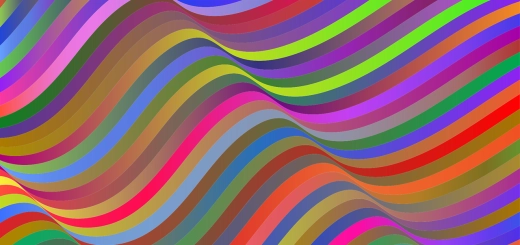Can We Understand the Infinite? Exploring the Impossible

Looking for more amazing products? Check out our online store and explore our collection here! Happy shopping!
Before diving in, please note: This post is for informational purposes only. If you’d like to know more about how we approach topics, feel free to check out our friendly Disclaimer Page.
Hey there, amazing readers! 
We’re committed to delivering quality posts, and your support (even just sticking around despite the ads) means everything to us. So, bear with us, and thanks for helping us keep the good vibes rolling. Now, on to the fun stuff!
TRANSLATE BUTTON AT THE END OF THE ARTICLE
A Quick Overview
Can we truly grasp the concept of infinity?
It’s a question that has tickled the minds of philosophers, mathematicians, and scientists alike for centuries.
Infinity represents something so vast and elusive that it often feels beyond our reach.
Yet, our curiosity compels us to explore it.
This article embarks on a journey through the infinite, unraveling its meanings, implications, and the profound questions it raises.
Let’s dive in!
Introduction: The Infinite and Our Curious Minds
We humans are naturally inquisitive creatures.
We look up at the stars and wonder about the universe’s vastness.
We ponder life’s mysteries, often reaching the conclusion that some things might just be beyond our comprehension.
Infinity—an idea with no end—definitely falls into that category.
Think about it: how can we wrap our minds around something that has no bounds?
From philosophers contemplating the nature of existence to mathematicians grappling with infinite sets, the subject of infinity has inspired countless discussions and debates.
However, it can also feel intimidating, like a word that means little more than "a really, really big number."
But if we dig deeper, a fascinating world opens up.
Infinity isn’t just a concept; it’s a lens through which we can examine reality itself.
It invites us to question everything we think we know, challenging our perceptions and sparking our imaginations.
As we explore this boundless topic, we’ll uncover layers of meaning that reveal how infinity relates to both our everyday experiences and grander cosmic truths.
What Does "Infinite" Really Mean in Math and Science?
At its core, infinity represents a value greater than any finite number.
In mathematics, it’s not a number in the traditional sense but rather a concept.
It’s often symbolized by the ∞ sign, which looks like a fancy loop—fitting, right?
In mathematical terms, infinity can be approached in various ways:
Potential Infinity: This refers to a process that can continue indefinitely.
For example, if you keep adding 1 to a number, you’ll never reach the end.
You can always add one more.
Actual Infinity: This refers to a quantity that is completed and infinite.
Think of the set of all natural numbers: 1, 2, 3, and so on.
This set has no end.
In the world of science, infinity pops up in several contexts.
Explore the Path to Spirituality and Enlightenment – Start Here.
Physicists often discuss infinite space when referring to the universe.
The cosmos appears to stretch endlessly, making it hard to wrap our heads around.
Similarly, in theories like string theory, the notion of multiple dimensions introduces infinite possibilities.
Understanding infinity in math and science is essential, but it can also feel abstract.
We rely on various representations—like limits in calculus—to help make sense of these concepts.
So, while infinity feels intangible, it grounds itself within our mathematical frameworks and scientific explorations.
Historical Perspectives: How Thinkers Approached Infinity
Throughout history, the concept of infinity has fascinated many great minds.
Ancient Greek philosophers like Zeno and Aristotle had differing views.
Zeno crafted paradoxes that probed the notion of motion and division, insisting that infinite processes reveal contradictions in our understanding of reality.
Aristotle took a more cautious approach.
He acknowledged potential infinity but was skeptical of actual infinity.
He believed that the universe is finite, a viewpoint that influenced medieval thinkers for centuries.
Fast forward to the Renaissance, and we find mathematicians beginning to embrace infinity.
Figures like Georg Cantor introduced groundbreaking ideas about infinite sets, showing that not all infinities are created equal.
For example, the set of real numbers is more extensive than the set of natural numbers, which was a revolutionary idea at the time.
In the 19th and 20th centuries, infinity gained further traction with the development of calculus.
Mathematicians like Newton and Leibniz explored limits and infinitesimals, giving us tools to analyze continuous change and motion.
This opened the door to modern mathematics as we know it today.
As we look back through history, it’s fascinating to see how our understanding of infinity has evolved, reflecting our changing perspectives on existence and the universe.
Infinity in Numbers: Exploring Countable vs. Uncountable
When diving into the concept of infinity, one of the most striking distinctions is between countable and uncountable infinities.
Countable infinity refers to sets that can be matched with natural numbers.
For example, the integers (both positive and negative) or the rational numbers can be arranged in such a way that each number corresponds to a unique natural number.
It’s like organizing people in a line; you can count them one by one, and they never run out.
On the flip side, we have uncountable infinity.
The real numbers, which include all rational and irrational numbers, fall into this category.
You can’t list them out to the same extent as countable infinities.
Cantor famously proved that there are more real numbers than natural numbers by demonstrating that if you tried to list all real numbers, there would always be some left out.
It’s sort of like trying to fit an ocean into a teacup—just impossible!
This distinction is crucial because it illustrates that infinity comes in different sizes.
The realization that some infinities are larger than others can be mind-bending.
It challenges our intuitive understanding and pushes us to think deeper about the nature of numbers and the universe.
The Paradoxes of Infinity: Zeno’s Famous Dilemmas
When we talk about infinity, we can’t ignore the intriguing paradoxes posed by Zeno of Elea.
His philosophical puzzles, crafted in ancient Greece, still provoke thought today.
One of the most famous is the “Achilles and the Tortoise” paradox.
Imagine Achilles racing a tortoise, who has a head start.
Zeno argued that Achilles would never catch up, because every time he reaches the point where the tortoise was, the tortoise has moved ahead just a bit.
This creates an infinite series of points Achilles must reach, suggesting he can never overtake the tortoise.
Another classic is the “Dichotomy Paradox.” Zeno claims that to reach a destination, you must first travel half the distance.
But before you complete that, you need to cover half of what’s left, and so on.
This infinite division implies that motion is impossible, as you can’t complete an infinite number of tasks in a finite time.
These paradoxes reveal the complexities of infinity and challenge our basic intuitions about movement and space.
They remind us that infinity isn’t just a mathematical concept—it’s a philosophical conundrum that continues to inspire debate.
Visualizing the Infinite: Can We See the Unseen?
Visualizing infinity can be tricky, but art and mathematics often join forces to illustrate this vast concept.
One way to think about infinity is through fractals—patterns that repeat at every scale.
Fractals, like the Mandelbrot set, demonstrate how complex forms can emerge from simple mathematical rules.
Once you zoom in on a fractal, you keep discovering new patterns that appear infinitely.
It’s like looking in a mirror reflecting another mirror—endless images stretching out before you.
Additionally, conceptually visualizing infinity can evoke imagery of endless roads or landscapes that fade into the horizon.
Imagine standing on a beach, gazing at the ocean stretching forever.
This mental picture gives us a glimpse into the infinite, even if we can’t fully grasp it.
While we can’t physically "see" infinity, we can certainly experience its implications through various artistic and mathematical expressions.
These visuals help bridge the gap between the abstract concept of infinity and our more tangible realities.
The Role of Infinity in Calculus and Beyond
Calculus fundamentally reshaped how we understand and interact with infinity.
It allows us to tackle problems involving continuous change, using limits to bridge the gap between finite and infinite processes.
Limit concepts help mathematicians define behaviors as numbers approach infinity or as they approach zero.
For example, the limit of 1/x as x approaches infinity gets closer and closer to zero.
This understanding allows us to find areas under curves and solve complex problems in physics and engineering.
Infinity also plays a role in sequences and series.
The idea of infinite series leads to practical applications in physics, such as calculating gravitational forces or electromagnetic waves.
Convergent series—those that result in a finite value despite having infinite terms—are particularly interesting.
Moreover, infinity finds its place in differential equations, which describe how functions change.
These equations often involve limits and can model everything from population growth to the spread of diseases.
Without the concept of infinity, modern mathematics and its applications would look drastically different.
Infinity provides us with essential tools to navigate the complexities of change, growth, and motion in our universe.
Infinity in Nature: Patterns That Go On Forever
Nature seems to have an affinity for infinity.
From the spirals of galaxies to the fractal patterns found in snowflakes and leaves, we see infinite structures everywhere.
Take the nautilus shell, for instance.
Its spiral shape is a perfect example of a logarithmic spiral—a form that expands infinitely.
The same goes for plants like ferns, which display fractal-like arrangements in their leaves.
Furthermore, the vastness of space itself introduces an infinite expanse that leaves us awestruck.
As we look up at the night sky, we can’t help but feel the weight of infinity.
There are billions of stars, galaxies, and possibly even other universes.
This cosmic scale can be both humbling and exhilarating.
Patterns like these inspire artists, scientists, and mathematicians alike.
They underscore the belief that infinity shapes not only our abstract concepts but also the physical world we inhabit.
By observing these infinite patterns, we gain insights into the harmonious complexity of nature.
The Philosophical Questions: Can We Ever Truly Know?
Infinity raises profound philosophical questions.
Can we ever grasp the infinite?
Is it something that can be known, or is it perpetually beyond our understanding?
Philosophers throughout history have wrestled with these ideas.
Some argue that infinity is a human construct—a way to understand the unseen.
Others contend it represents a fundamental truth of existence, an aspect of the universe that we can only approximate but never fully comprehend.
Take the idea of time.
Many philosophies consider time to be infinite—stretching in both directions without end.
Yet, our experiences of time feel finite.
This tension between finite understanding and infinite possibilities can make us feel small in the grand scheme of things.
Moreover, the uncertainties surrounding infinity challenge our perceptions of knowledge itself.
If infinity exists in a tangible way, does that mean our understanding of reality is inherently limited?
These questions invite us to reflect on the nature of existence, knowledge, and our place within the cosmos.
They remind us that some mysteries—like infinity—may remain just that: mysteries.
Infinity in Technology: Algorithms and Infinite Loops
In the digital age, infinity has a surprising role in technology.
Algorithms often involve concepts that stretch toward infinity, especially in fields like artificial intelligence and computer science.
Take, for instance, the idea of infinite loops in programming.
A programmer might create a loop that repeats indefinitely until a specific condition is met.
While such loops can be useful, they can also lead to frustrating glitches!
Ever had your computer freeze because it was stuck in a loop?
Yep, that’s infinity acting up.
Moreover, algorithms that rely on infinite data—like search engines—consume vast amounts of information to provide answers.
These systems continuously learn and adapt, striving for better accuracy in an ever-expanding universe of data.
Infinity also appears in mathematical modeling, where simulations can help predict outcomes in everything from climate change to economics.
These models often incorporate infinite variables, reflecting the complexity of real-world systems.
In the world of technology, infinity serves as both a challenge and an opportunity.
As we navigate this digital landscape, we harness the concepts of infinity to create innovative solutions and explore new frontiers.
Embracing the Infinite: Lessons from the Unknown
As we wrap up our exploration, it’s essential to consider what infinity teaches us.
Embracing the infinite can encourage a sense of wonder about life, knowledge, and the universe.
Rather than seeing infinity as daunting, we can view it as an invitation to explore.
It reminds us that there is always more to discover—more questions to ask, more mysteries to solve.
Just as mathematicians and scientists probe the infinite, we too can approach life with a spirit of curiosity and openness.
It’s also about humility.
Recognizing that some things, like infinity, may be beyond our full understanding can be liberating.
It encourages us to appreciate the beauty in the unknown and to embrace the journey of discovery rather than merely seeking answers.
Ultimately, infinity offers a profound perspective on life.
It invites us to celebrate our curiosity, curiosity that drives us to push boundaries and explore new horizons.
Conclusion: Celebrating the Mystery of the Infinite
As we conclude our journey, one thing is clear: infinity is a concept that will forever intrigue us.
From mathematical formulations to philosophical inquiries, the infinite challenges us to rethink our understanding of the universe.
Infinity isn’t just an abstract idea; it resonates in nature, technology, and our everyday lives.
It reminds us that while we may seek knowledge, some mysteries might elude us.
But isn’t that what makes life exciting?
The pursuit of understanding the infinite pushes us to explore, question, and innovate.
So, let’s celebrate the mystery of infinity.
Let’s embrace our curiosity and continue to delve into the boundless possibilities that this remarkable concept offers.
After all, as long as we keep asking questions and seeking answers, we’re all part of this infinite journey together!

The Enlightenment Journey is a remarkable collection of writings authored by a distinguished group of experts in the fields of spirituality, new age, and esoteric knowledge.
This anthology features a diverse assembly of well-experienced authors who bring their profound insights and credible perspectives to the forefront.
Each contributor possesses a wealth of knowledge and wisdom, making them authorities in their respective domains.
Together, they offer readers a transformative journey into the realms of spiritual growth, self-discovery, and esoteric enlightenment.
The Enlightenment Journey is a testament to the collective expertise of these luminaries, providing readers with a rich tapestry of ideas and information to illuminate their spiritual path.
Our Diverse Expertise
While our primary focus is on spirituality and esotericism, we are equally passionate about exploring a wide range of other topics and niches 

To ensure we provide the most accurate and valuable insights, we collaborate with trusted experts in their respective domains 
Our blog originally focused on spirituality and metaphysics, but we’ve since expanded to cover a wide range of niches. Don’t worry—we continue to publish a lot of articles on spirituality! Frequently visit our blog to explore our diverse content and stay tuned for more insightful reads.
Hey there, amazing reader! 
Check out our store here and take a peek at some of our featured products below! Thanks for being awesome!













